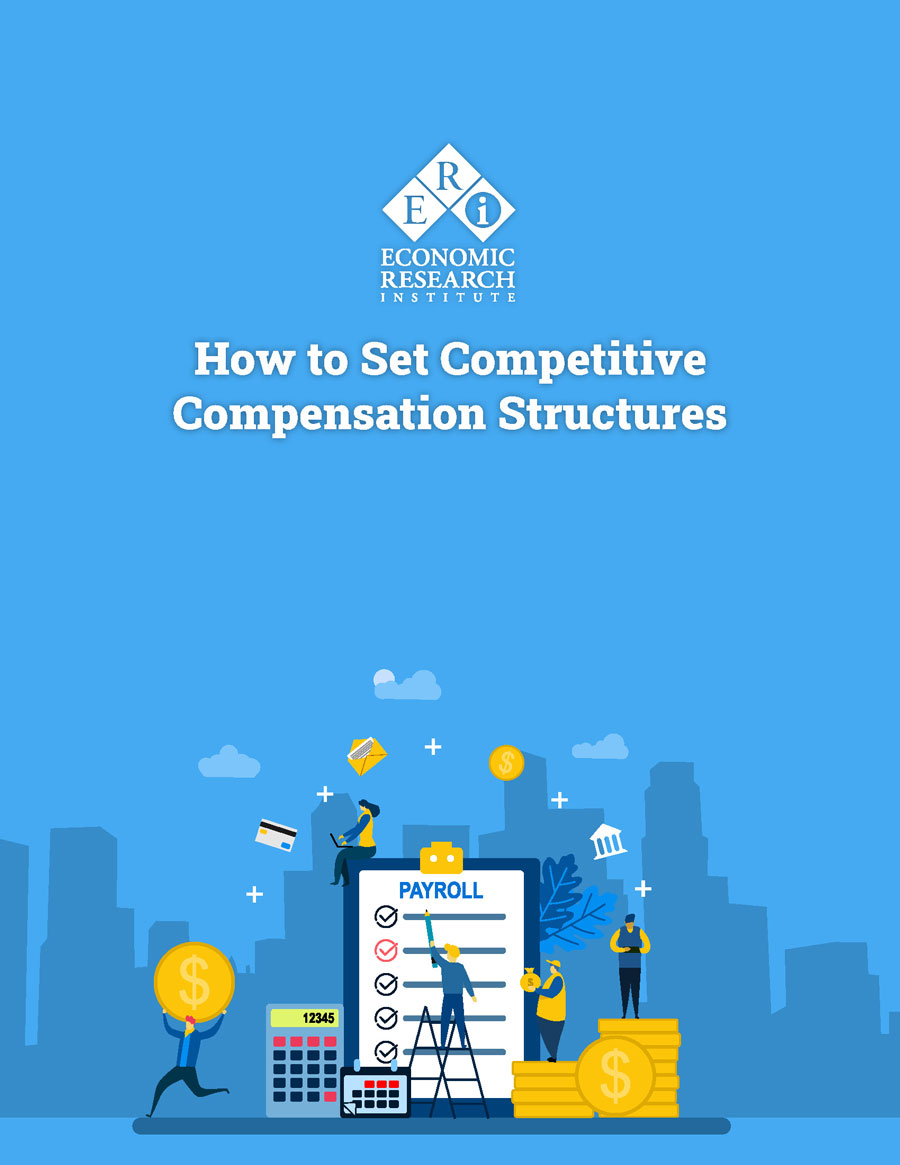Whether formalized or not, all companies have a compensation philosophy. Decisions about how employees are paid, how work is valued, and how much of the company’s financial resources are allocated create a framework for transparency, consistency, and fairness. Factors such as market, company size, revenue, sales, location, industry, and competition for qualified workers impact the budget for one of the biggest costs of doing business – the labor force. A salary planning strategy that supports the “why” behind employee pay is key to determining short- and long-term needs. Salary surveys provide a plethora of data that can be used to drive the salary planning strategy.
Often, formal salary planning is nonexistent or reactionary in nature. An urgent business need requires creation of a new job, recruitment for a position proves hard to fill, internal compression and equity issues surface, or rapid market movement creates a high demand for a certain skill set or certification. Survey data are used to address the immediate need without necessarily looking at the downstream impact. One formal planning strategy is to perform an annual salary review of all jobs using external salary survey data. Some companies may have the internal resources to perform a comprehensive review of all jobs, while smaller organizations may not. Whether outsourced or completed in house, a review of all jobs on a regular basis (at least annually) allows for planning and preparation to make timely financial decisions to keep the labor force competitive.
Periodic review begins by comparing internal jobs to external benchmark salary survey data. Salary survey data show how your company fares at a point in time in comparison to other organizations and industries. It is important to pay attention to market changes and stay current because failing to keep up with the competition can lead to the loss of valuable employees. It is a starting point for determining the next steps in deciding how much expense is palatable for sound business sense and economic solvency and to support the compensation philosophy.
ERI’s Salary Assessor provides tools for creating a comprehensive benchmark list of the jobs within a company. It has the capability for creating hybrid jobs and benchmarking against those, as well. Additionally, market data are accessible at multiple percentiles, allowing input of actual salaries to calculate the market index or compa-ratio. Comparisons of base salary, incentives, or total cash compensation based on various pay periods (annual, monthly, weekly, etc.) and relevant years of experience or organization size are available. Reports are downloadable in Excel or PDF format, allowing further detailed analysis and clear documentation. Lists can be saved and used again, with further adjustments as needed.
ERI’s salary planning tools provide the ability to manage employees, analyze data by function, department, or an overall big picture view – whichever is most relevant for your company. Aging factors to project future needs, data cuts by industry, size, revenue, and location, plus job descriptions including overview and typical functions are all included. The goal is to accurately determine how competitive your jobs are and what the external market is demanding.
The Salary Assessor also includes a dashboard and scheduling assistant to walk you through the process of setting up its robust compensation management tool. Once completed, periodic review is at the ready. Communicate often with key stakeholders, such as hiring managers, talent acquisition specialists, HR business partners, and senior leadership. Include them in the review and analysis as a source for future workforce business needs, recruitment issues (such as a limited labor pool or an aging profession), retention issues, turnover (especially turnover of key positions and high potential employees), and fair pay considerations. Identify areas of rapid growth or stagnation in the market. Solicit specific requests to review based on anecdotal information. While the analytics may tell one story, the company may place a different value on specific jobs that is not necessarily reflected in the survey data. Communication is vital in these analyses, so ERI’s compensation management application includes tools for management review of increases and communication of compensation changes to employees.
Once the compensation management tool is to set up to reflect the particulars of your organization, hypothetical analyses can be made to determine costs based on different scenarios, such as leading the market, an acceptable lag, or keeping up with the market. These costs can then be incorporated into the overall payroll budget, and critical decisions can be evaluated for addressing salary needs to support the organizational goals, mission, vision, and compensation philosophy.
To develop a solid understanding of the current labor force, it is important to have access to reliable salary survey data and also take the time to know and review your jobs, the organization’s needs, and strategic goals. When you have a clear understanding, you can plan better for annual wage increases and improve the overall efficiency of your budget and salary planning process. Leadership wants to be prepared for gaps in managing the company’s most valuable assets – people.



